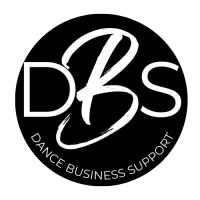How to Set Competitive Prices for Dance Classes
Setting competitive prices for dance classes is crucial for dance studio owners who want to boost profitability and maintain a healthy business. While it can be tempting to price match nearby studios, a successful pricing strategy should go deeper. By carefully calculating costs, understanding your break-even point, and valuing your time, you can confidently set prices that sustain and grow your studio. Let’s explore how to make pricing decisions that build financial stability and allow for future growth.
Step 1: Calculate Class Expenses
Every class comes with its own set of costs, from instructor pay to studio maintenance. To set a profitable price, start by calculating all expenses related to each class, including:
- Instructor wages: Factor in whether you or a hired instructor is teaching, and set a rate that reflects experience and time.
- Studio overhead: Include rental or mortgage costs, utilities, and insurance.
- Administrative costs: Enrolment systems, class management software, and marketing efforts all add up.
- Supplies: From dance mats to cleaning supplies, materials impact your overall expenses.
Once you’ve totaled these costs, you’ll know the minimum amount each class must generate to break even. Pricing with this number in mind ensures every class contributes to your studio’s bottom line.
Step 2: Value Your Time with a Consistent Hourly Rate
To set prices that reflect the true value of your time and resources, establish an hourly rate for your classes. Apply this rate consistently across all classes, adjusting only for class length. For example:
- If your hourly rate is $10, a 60-minute class would cost $10, and a 45-minute class would cost $7.50.
This approach keeps pricing uniform and straightforward, eliminating discrepancies across classes and allowing for fair comparison. It also sends a strong message to clients about the value of the training they’re receiving, regardless of class duration.
Step 3: Understand Your Break-Even Point by Enrolment Numbers
Determining the minimum enrolments needed to cover costs is essential for setting profitable class sizes. After calculating expenses, divide by your per-student rate to find the break-even enrolment. This information not only helps you understand what’s required to make each class viable but also assists in planning for marketing efforts or discount strategies if enrolment falls short.
For example, if each student pays $10 and your calculated expense per class is $80, you’ll need at least 8 students to break even. Knowing these figures gives you a clear baseline for class viability.
Step 4: Compete Smartly by Highlighting Added Value
While local competition is important to consider, it’s essential to focus on the unique value your studio offers. A profitable studio can reinvest in quality instructors, updated facilities, and engaging class content, justifying premium pricing. Rather than undercutting other studios, offer added value through:
- Instructor expertise: Emphasize your team’s experience and qualifications.
- Class quality: High-quality instruction, smaller class sizes, or tailored programs that other studios might not offer.
- Facility amenities: Updated equipment, clean spaces, and comfortable waiting areas add value to clients.
Pricing competitively is less about matching others and more about highlighting the unique aspects of your studio that warrant a premium price. By investing in these elements, you demonstrate that your classes are worth the additional cost.
Building Profit with Pricing Strategies
Setting competitive prices for dance classes doesn’t mean offering the lowest rates; it’s about ensuring each class is profitable, valuing time, and positioning your studio as a premium choice. By knowing your break-even points, setting consistent rates, and focusing on the quality and value of your offerings, you’ll create a pricing model that supports a thriving studio.
See Your Path to Profit
Ready to get clarity on setting prices that truly drive profit? With the Studio Pathway to Profit audit, you’ll receive a full review of your current pricing and tailored strategies for maximizing revenue. This audit includes a detailed breakdown of every class, showing potential pricing scenarios and how each impacts your profit. Discover how the audit can redefine your studio’s pricing and growth potential.







